Crack at a mystery of blood drops
 Sep 10, 2015 • 9:09 PM UTC
Sep 10, 2015 • 9:09 PM UTC United States
United States 140x Magnification
140x Magnification Microorganisms
Microorganisms
Manu Prakash
I am a faculty at Stanford and run the Prakash Lab at Department of Bioengineering at Stanford University. Foldscope community is at the heart of our Frugal Science movement - and I can not tell you how proud I am of this community and grassroots movement. Find our work here: http://prakashlab.stanford.edu
266posts
1192comments
42locations
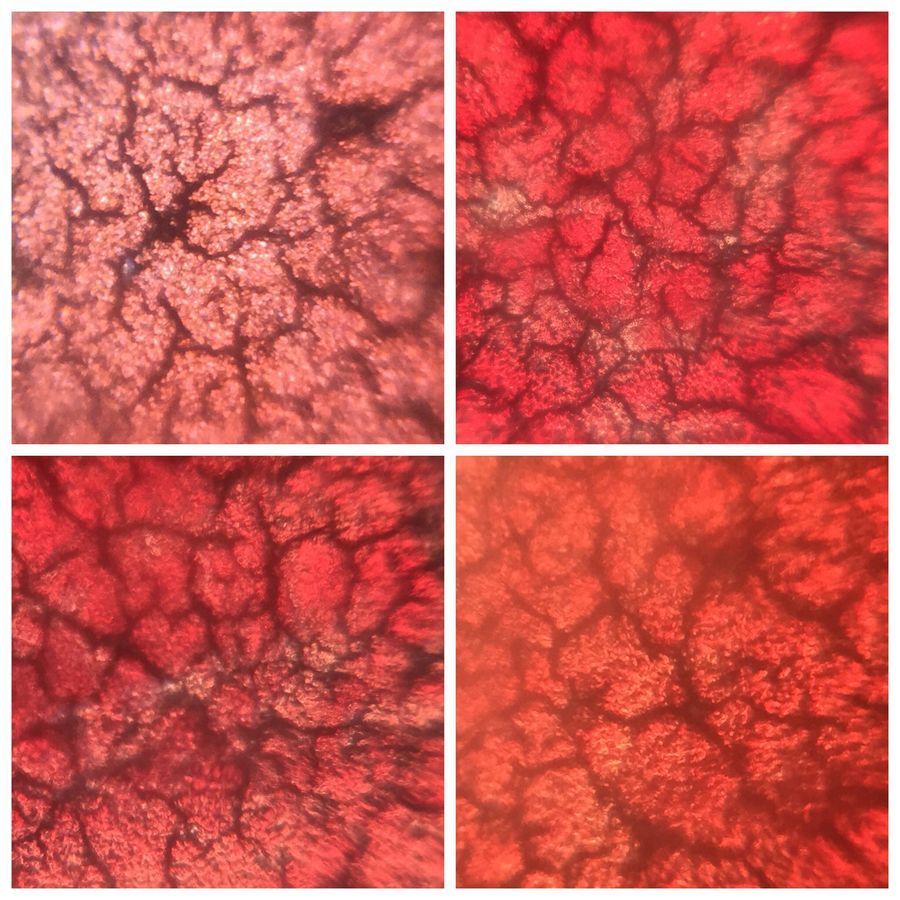
Why a drop of blood cracks?
I don’t usually cook. When I cook, I can’t be stopped. So you can imagine a scenario, where I think I know what I am doing in the kitchen; but I really don’t. This scenario unfolded recently, and in the rush to chop some vegetables, I sliced my hand. Not too deep a cut, and in that moment I realized, I have got some supply of fresh blood to Foldscope.
I quickly pulled out some clean glass slides and dropped one drop of blood per slide. I made three slides, and for the last one; I added a little drop of water to make sure it does not dry (since I knew that drops of blood dry very quickly).
I don’t usually cook. When I cook, I can’t be stopped. So you can imagine a scenario, where I think I know what I am doing in the kitchen; but I really don’t. This scenario unfolded recently, and in the rush to chop some vegetables, I sliced my hand. Not too deep a cut, and in that moment I realized, I have got some supply of fresh blood to Foldscope.
I quickly pulled out some clean glass slides and dropped one drop of blood per slide. I made three slides, and for the last one; I added a little drop of water to make sure it does not dry (since I knew that drops of blood dry very quickly).
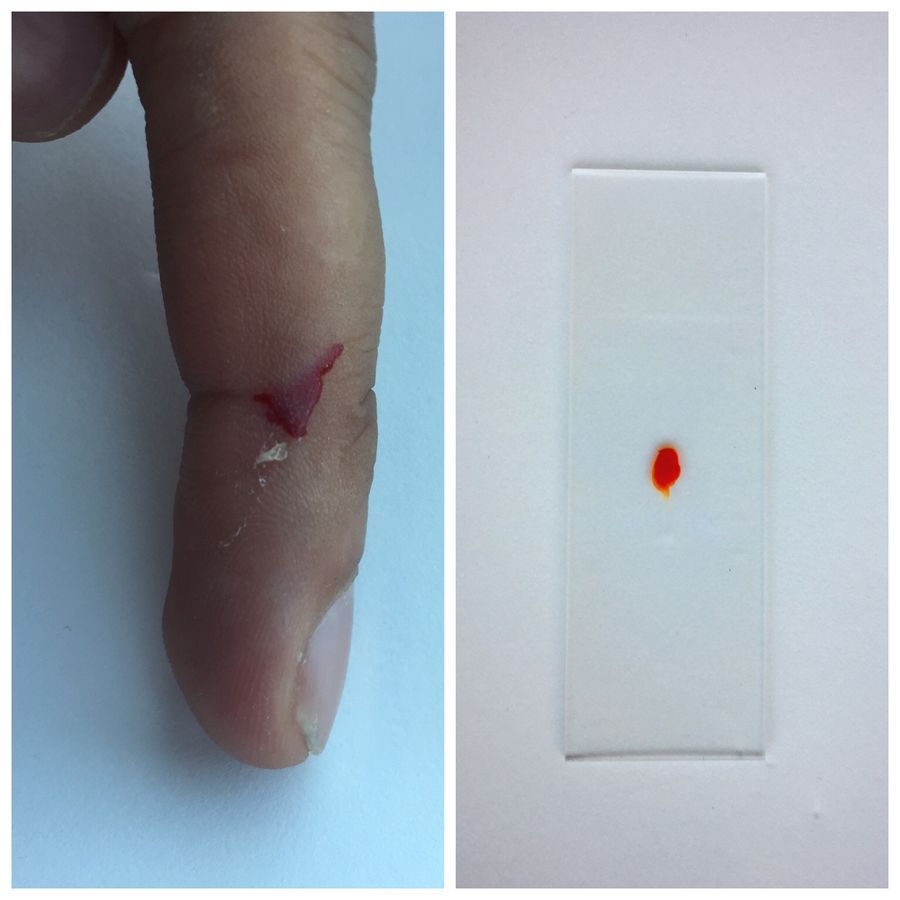
Now I put my first slide into a Foldscope and I was ready for a surprise. I noticed a strange pattern inside the thick drop of blood. I could see really packed red blood cells (giving the film a thick red hue) but also a strange pattern of cracks.
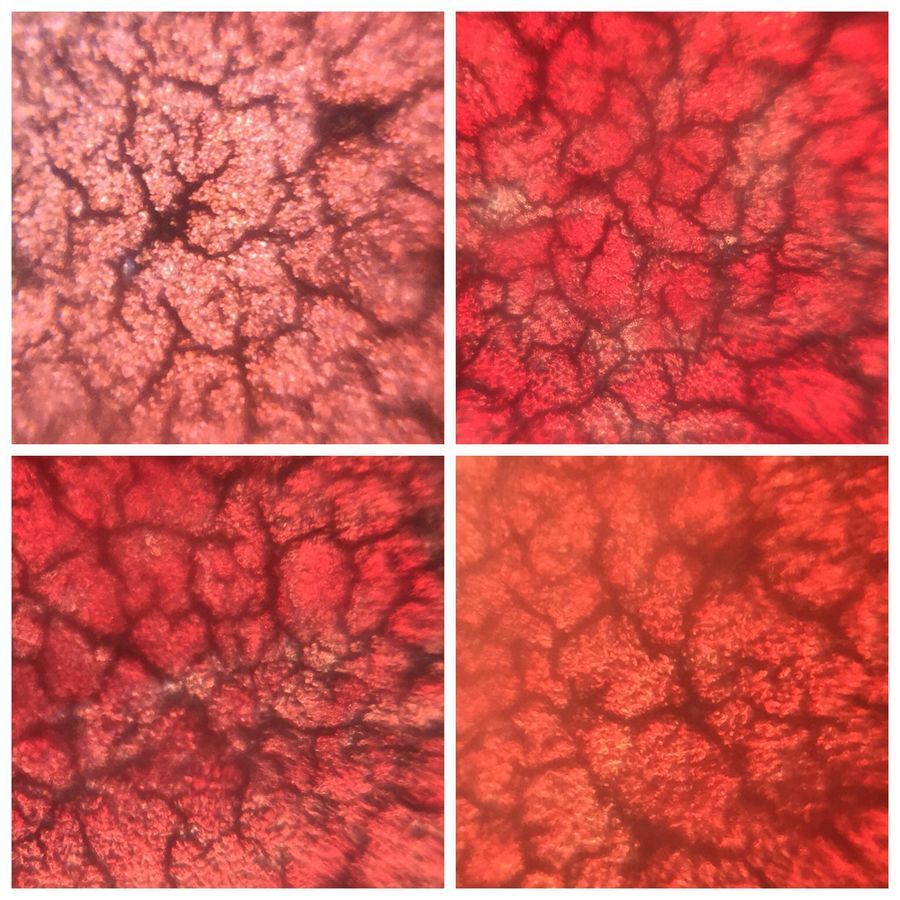
The cracks often had branch like structures, which often had further branches. I always look for patterns in nature, and this was quiet remarkable. My first impression was of awe and beauty, but slowly analytical side of my brain started wondering what causes these crack patterns.
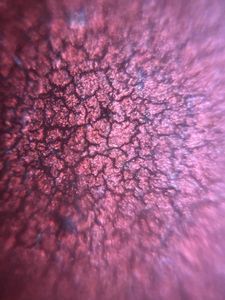
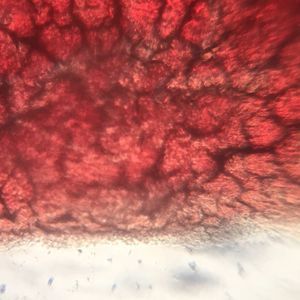
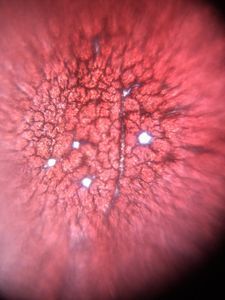
I looked at all three samples; and surprisingly, I noticed this pattern is true for all of them. Interestingly, the crack pattern changes as we go from the center of the drop to its edges. One guess would be that the film thickness from the center to the edge varies a lot; giving rise to different physical conditions or properties associated with in this pancake shaped drying drop of blood.
A fascinating side note; I discussed this problem with a bright young student (who is just starting middle school) on my flight to Chicago, and he had an instantaneous hunch that this is similar to crack patterns we see in drying mud and clay.
A fascinating side note; I discussed this problem with a bright young student (who is just starting middle school) on my flight to Chicago, and he had an instantaneous hunch that this is similar to crack patterns we see in drying mud and clay.

That’s Alex and his dad – David. We discussed all kinds of things in flight. Also Alex gave me a mini tutorial on Minesweeper. No no.. I mean minecraft 🙂
Back to the mystery.. Alex is absolutely right – it is indeed the same phenomena that we would see when paint films dry or when clay dries (remember the iconic picture of a drought). Now the question is, how does it actually work?
Back to the mystery.. Alex is absolutely right – it is indeed the same phenomena that we would see when paint films dry or when clay dries (remember the iconic picture of a drought). Now the question is, how does it actually work?
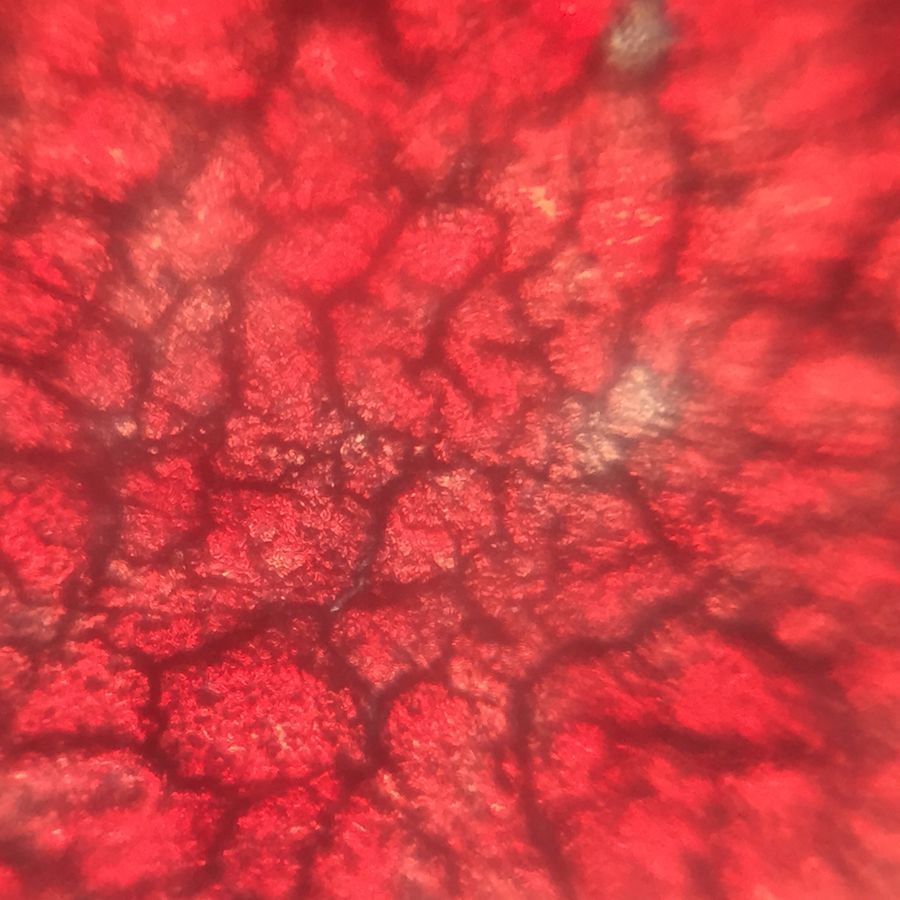
So, let’s consider a think film of blood cells on a glass slide, which is still wet, and hence has some amount of water. As it starts to dry, the film is being compressed downwards. This downward force comes from little miniature liquid bridges that form between blood cells in the very top surface of the film. Think of a little bridge of liquid constrained by the two blood cells. As the water evaporates in the blood, the curvature of this liquid bridge becomes more and more extreme (since the volume is reducing) which leads to a capillary pressure. This compressive force is balanced by a reaction force from the glass (which does not give and stays in place because of how stiff it is). But one outcome of this compression is an extensional force on the drop of blood which stretched the film radially outwards. Since the substrate can not stretch (it’s glass after all); the thick film of blood gives way and cracks. These cracks are highly dynamic and lead to release of the stress that was developing in the film.
Cracks in general have fascinating life. We can look at the final shape and form of these patterns as the output or consider the much more difficult challenge of predicting the time evolution of these patterns. To give a better insight into the time evolution of these cracks; I will do a time lapse imaging of the same and share my data next time. But for that, I need to wait to go into the kitchen again and wait for a chopping board accident (I hope not).
Cheers
Manu
Cracks in general have fascinating life. We can look at the final shape and form of these patterns as the output or consider the much more difficult challenge of predicting the time evolution of these patterns. To give a better insight into the time evolution of these cracks; I will do a time lapse imaging of the same and share my data next time. But for that, I need to wait to go into the kitchen again and wait for a chopping board accident (I hope not).
Cheers
Manu
Sign in to commentNobody has commented yet... Share your thoughts with the author and start the discussion!

 0 Applause
0 Applause 0 Comments
0 Comments
















